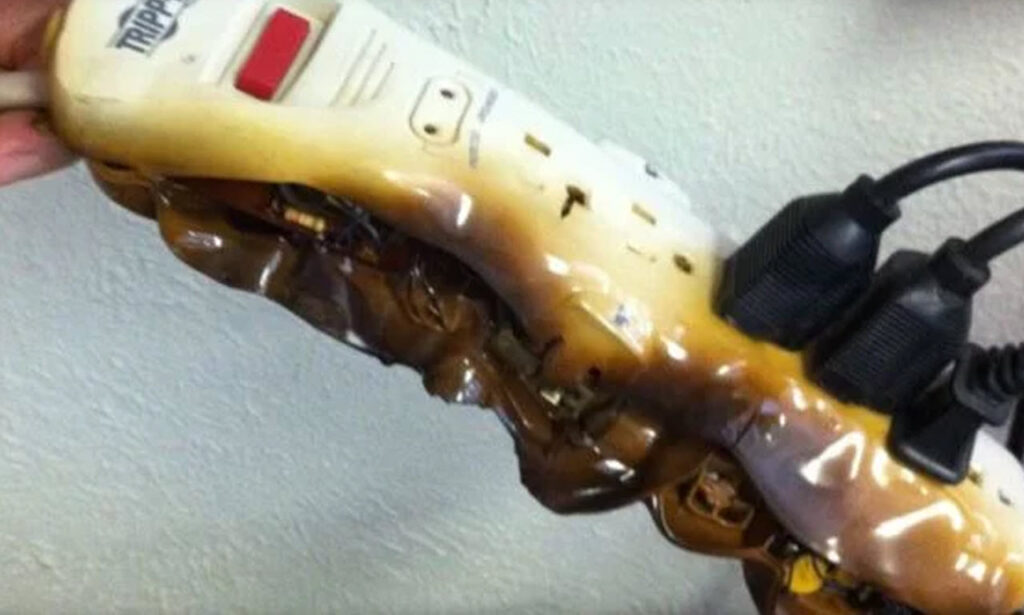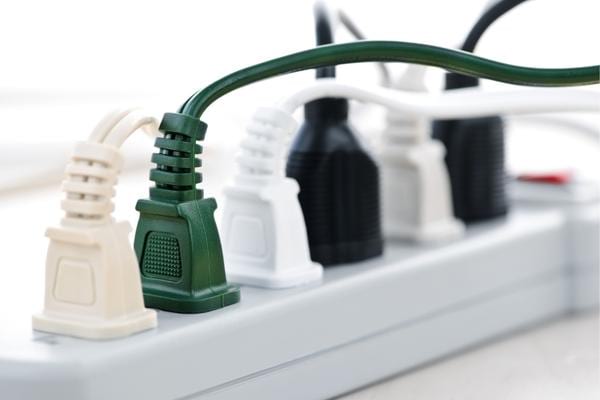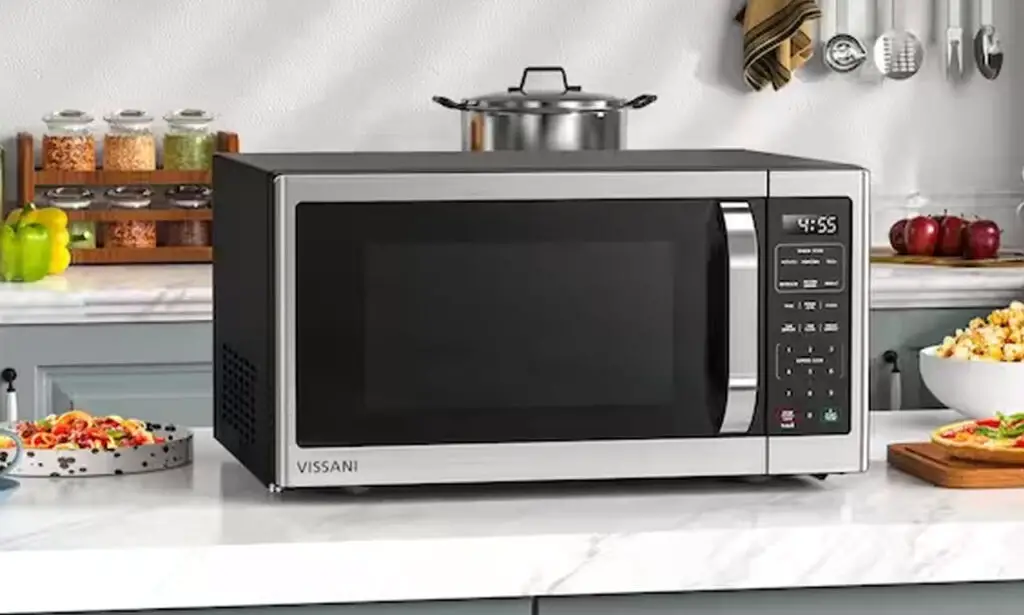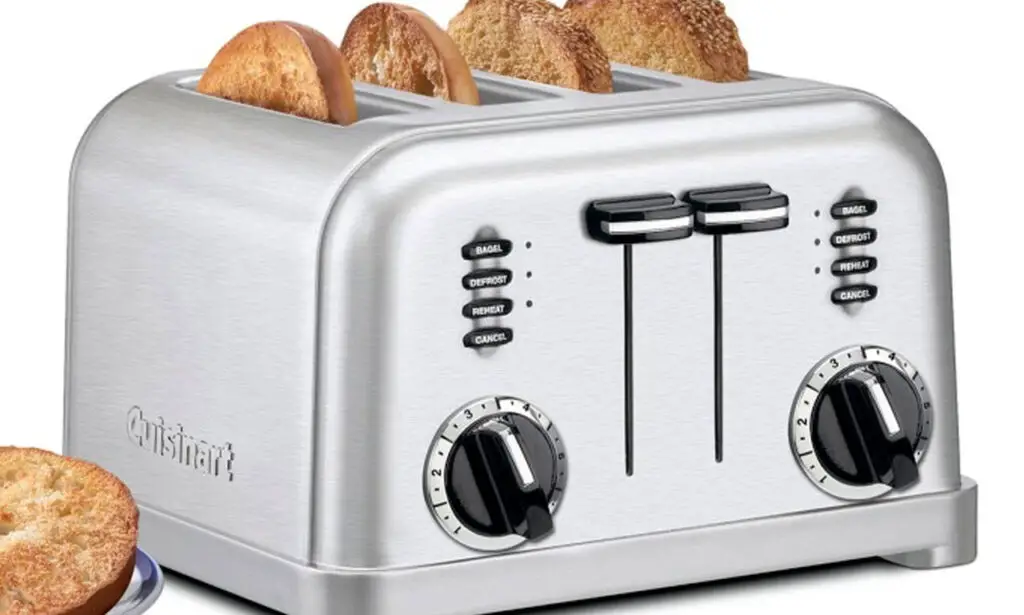
When we think of the past, one of the first thoughts that runs through our mind is how people lived without electricity. Nowadays, we can’t even imagine a day without it because all of our appliances and devices run on electricity.
The truth is, however, that most homes don’t have enough power outlets to keep everything running and charged, so most of us rely on power strips without being aware that appliances that consume a lot of energy become dangerous fire hazards when we plug them into a power strip.
Although power strips are the thing to go to when it comes to charging your phone or power an entertainment setup, there are certain devices that should never be plugged into a power strip.
Air conditioners, space heaters, toasters, and other appliances that use high wattage can easily cause power strips to overheat, which can easily lead to a fire hazard.

Even before plugging anything into a power strip consider the ammount of power they support. This is usually listed on the product itself.
High-capacity appliances need to draw a lot of power through an electrical circuit to work. Keep in mind that an appliance does not need to be large in size to draw large amounts of power.
Below is the list of appliances that should never be plugged into a power strip.
1. The oven: Even though the oven is not used continually, it is a power-hungry appliance that should not be plugged into a power strip. In fact, it should be plugged into its own wall outlet on its own circuit.
2. Refrigerator: Refrigerators require a lot of power and frequently cycle on and off which can easily overload a power strip and cause damage. Much like the oven, refrigerators require a wall outlet dedicated solely to powering the appliance.

3. Washing Machine: When turned on, washing machines pull a lot of power. This is the main reason why these appliances shouldn’t share a receptacle with any other appliance or device.
Most washing machines use a max of up to 1400 watts, putting it dangerously close to the max load of most power strips. On top of that while working, washing machines are usually left unattended and work longer hours, at least an hour, which is long enough for a power strip to overheat.
4. Heating: Portable heaters should never be plugged into a power strip because most of them use 1,500 watts of energy on their high setting and they usually run for extended periods of time.

5. Microwave: Since they consume a lot of energy when used, most microwave ovens are plugged into their own receptacle and that is always a good practice.
6. Coffee Maker: Those who own a coffee maker are not fully aware of the power these appliances use, and this is why they should never be plugged into any sort of power strip or extension cord.

7. Toaster: You may think that browning up slices of bread or bagels doesn’t require a lot of energy, but the truth is that toasters use a lot of energy when in use and they should be plugged directly into the receptacle rather than a power strip.
8. Another Power Strip: Power strips are not meant to be used in conjunction with another power strip, although many people do exactly that. This, however, violates most safety codes because it can easily lead to overloading the electrical system.
9. Electronics (Computer, TV, Router): These types of electronic devices don’t necessarily use a lot of power on their own, but they are sensitive to surges and you can find yourself with a burnt out computer or TV very quickly if you plug them into a power strip.
If you want to protect these sensitive devices from power surges, opt for a power strip that functions as a surge protector.
At 86, She Looks Decades Younger—Here’s Her Secret to Aging Without Surgery
Famous actress Claudia Cardinale has embraced aging gracefully, believing that time is unstoppable. Her approach shows a natural and inspiring transformation through the years.
Instead of turning to surgery, Claudia has chosen to accept each stage of life. She believes true beauty comes from within, a mindset that has gained her admiration from fans worldwide.
Her transformation over the years shows her confidence in aging naturally. Claudia’s appearance is a testament to her strength and timeless elegance, proving that beauty truly knows no age.

Source: Getty Images
Italian actress Claudia Cardinale was a big name during Hollywood’s golden age. Over her long career, she appeared in more than 100 films, especially from 1960 to 1970.

During that decade, she acted in about 30 movies, including famous titles like 8½ (1963), The Leopard (1963), and The Professionals (1966), where she starred with Burt Lancaster and Lee Marvin.

Another memorable role was in Once Upon a Time in the West (1968), directed by the legendary Sergio Leone. Cardinale recalls that Leone had a unique style, often playing the music for a scene before filming it.

Reflecting on her U.S. career, Cardinale said, “I didn’t ask to go to Hollywood; they called me.” At that time, Hollywood studios quickly signed up new stars under strict contracts, which limited actors’ freedom in their careers.

Cardinale resisted this, avoiding an exclusive deal with Universal Studios. She preferred signing one contract at a time, allowing her to build a career on her own terms.
In her three years in Hollywood, Cardinale acted in movies like The Pink Panther and The Professionals, working with famous actors such as Rock Hudson in Blindfold and sharing the screen with John Wayne and Rita Hayworth in Circus World.

During this time, she met many Hollywood icons, including Barbra Streisand, Steve McQueen, and Warren Beatty.
In 1961, Cardinale attended Cannes for the first time, promoting films like Girl With a Suitcase and The Lovemakers. She returned to Cannes in 1963 with The Leopard and 8½, both highly acclaimed movies.

Shooting two films at once was challenging, as each director wanted a different look for her. She dyed her hair dark for Visconti and went blonde for Fellini, switching colors every two weeks.
Later, she returned to Hollywood, starring in films with Rock Hudson like Blindfold and Lost Command. Cardinale was offered an exclusive contract with Universal, but she declined, saying, “No, I’m European. I’m going back.” She stayed true to herself, resisting the pressure.

Unlike some actresses, Cardinale never appeared in nude scenes and stayed clear of cosmetic surgery. She believes in showing her true self. “I’ve never done – what do you call it? – a facelift,” she once said, explaining her decision to age naturally.






Now 86, Cardinale still works in the entertainment industry. Her recent project was the Tunisian-Italian film The Island of Forgiveness. About staying active, she said, “I don’t like all these facelifts and plastic surgery because you can’t stop time.”

Starting from the “Most Beautiful Italian Girl in Tunisia” in 1957, Cardinale’s journey reflects her strength and beauty. Her story shows that true beauty lies in embracing oneself and staying genuine.



Leave a Reply